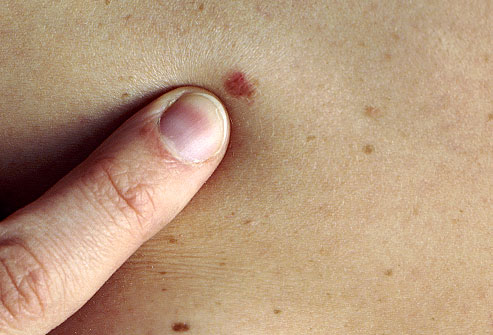Leave a Comment:
3 comments
[…] Chemo Cream Prevents Non-Melanoma Skin Cancer? […]
Reply[…] Chemo Cream Prevents Non-Melanoma Skin Cancer? […]
Reply[…] Chemo Cream Prevents Non-Melanoma Skin Cancer? […]
Reply
“People don’t appreciate having stuff cut on their face a lot… They do it if there is a (skin cancer) there, but we want to take a proactive approach where we can give them something to reduce their risk of getting new cancers…”
Here’s your situation. You’ve had one or more non-melanoma skin cancer spots, probabably somewhere on your face. My 89 year old mom has had these basel or squamous cell skin cancer spots surface and then have cut off (mohs surgery) repeatedly over the past twenty or so years.
The problem is, like the quote above, you don’t appreciate having stuff cut on your face? According to the article linked and excerpted below, a course of 2-4 weeks of 5-FU cream can reduce your risk of needing surgery to cut stuff off your face.
5-FU cream may be less expensive than Mohs surgery but it’s not a perfect therapy. There are side effects described in the article and don’t forget that we need long term studies to learn more.
To learn more about other evidence-based therapies that can help prevent the development of non-melanoma skin cancer or relapse, please watch the short video below:
Have you been diagnosed with non-melanoma skin cancer? If you would like to learn more about both conventional (FDA approved) and evidenced-based, non-toxic therapies for non-melanoma skin cancer scrll down the page, post a question or comment and I will reply to you ASAP.
Thank you,
David Emerson
“Results of a new randomized, double-blinded, controlled clinical trial in veterans showed a 75 percent reduction in the risk of needing surgery to treat a squamous cell carcinoma for a year after applying a skin cream for up to four weeks…
New results from a clinical trial involving more than 900 military veterans at high risk for keratinocyte carcinoma skin cancer provides evidence that using the generic skin cream fluorouacil 5 percent for two to four weeks may reduce the risk of a squamous cell carcinoma (SCC) needing surgery by 75 percent within a year…
The dose is the same as dermatologists currently employ to treat actinic keratosis. In a 2015 study, Weinstock and co-authors showed the up to four-week regimen of 5-FU had a multi-year preventive benefit in reducing the number of actinic keratosis (AK) and the need for treatment. Earlier this year, they also showed that the medicine prevents new AKs from emerging for two to three years…
In the absence of such a long-lasting prevention option, he said, the typical approach to caring for patients with a history of prior carcinomas is to monitor for the next cancer and then remove it surgically — an effective but imposing strategy often called “wait and cut…”
“People don’t appreciate having stuff cut on their face a lot,” said Weinstock, who led the trial funded by the U.S. Department of Veterans Affairs and conducted at a dozen V.A. hospitals around the country. “They do it if there is a cancer there, but we want to take a proactive approach where we can give them something to reduce their risk of getting new cancers…”
For BCCs, there was an 11 percent reduced risk after the first year among the group that received 5-FU, but that difference was not statistically significant. In the second year, BCC cases requiring surgery rose in the 5-FU group, but in years three and four, and by the end of the study, there was no significant overall difference in risk of developing a BCC requiring surgical treatment. After four years, 298 of all study the participants had developed at least one BCC, and 108 had developed at least one SCC.
The study did show a significant decrease in the risk of needing Mohs surgery to treat a BCC in the first year. Mohs surgery is more effective but also more elaborate and expensive than a conventional procedure,..
“This suggests that using the 5-FU can reduce the resources needed to treat these carcinomas,” Weinstock said.
The cream does have common side effects including reddened, more sensitive and often crusty skin, effects that resolve when the application of the cream stops, Weinstock acknowledged. After the study’s first six months, 21 percent of the 5-FU group rated the side effects as “severe,” and 40 percent rated them as “moderate…”
But after six months and again at the end of the four-year trial, 87 percent of participants in the 5-FU group said they’d be willing to repeat the treatment if it proved effective in reducing skin cancer…”
[…] Chemo Cream Prevents Non-Melanoma Skin Cancer? […]
Reply[…] Chemo Cream Prevents Non-Melanoma Skin Cancer? […]
Reply[…] Chemo Cream Prevents Non-Melanoma Skin Cancer? […]
Reply